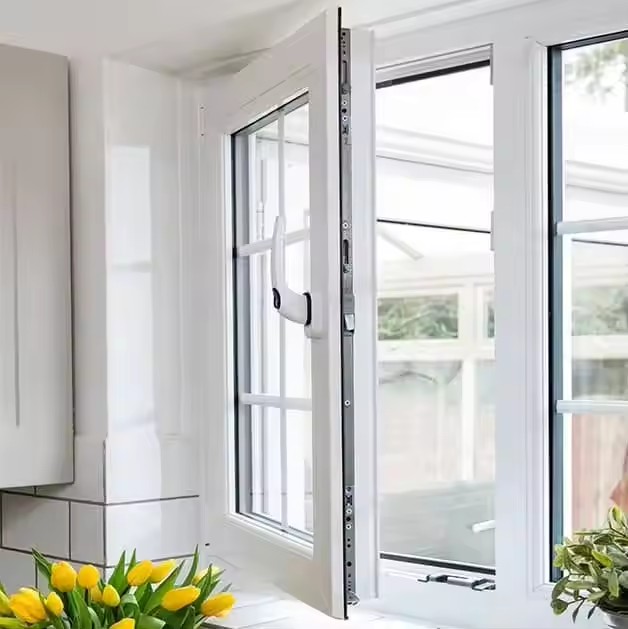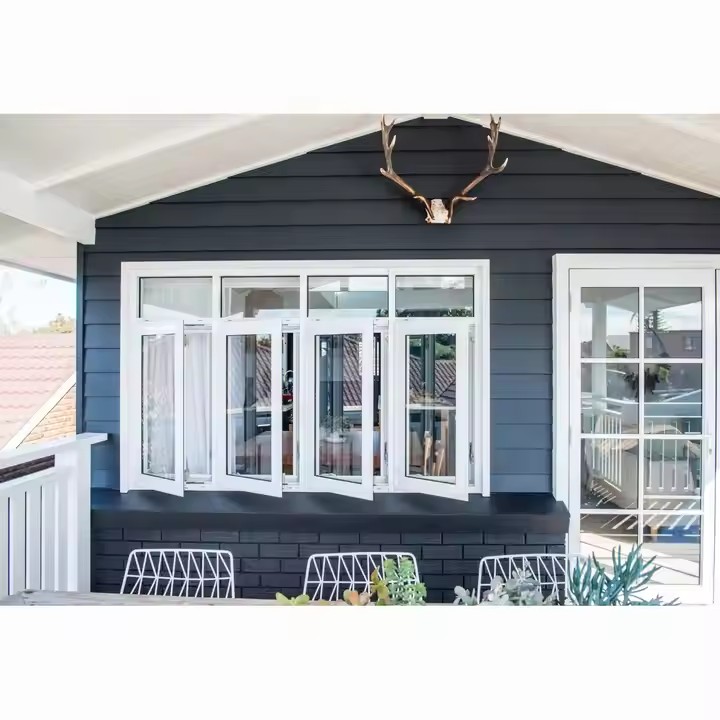Broken Bridge Aluminum (Thermal Break Aluminum):
Broken bridge aluminum is one of the most popular materials in the Australian door and window market, accounting for around 40% of total market share, with prices typically ranging from AUD 150–300 per square meter. This material uses a thermal break structure combined with an EPDM sealing system, effectively blocking heat transfer and achieving a heat transfer coefficient of ≤2.0W/m²·K. When paired with Low-E double glazing or laminated glass, it provides excellent daylighting and insulation, reducing air-conditioning energy consumption by over 20%. These features make it compliant with BASIX and NatHERS energy efficiency standards, suitable for both residential and commercial energy-saving applications across Australia.
Premium Timber Options
Accoya Wood:
Accoya is the preferred material for many high-end door and window manufacturers thanks to its outstanding performance. Through acetylation treatment, Accoya achieves exceptional durability and structural stability—it resists warping, deformation, and twisting. It is easy to machine and allows for fine detailing with an excellent surface finish. The raw material comes from sustainably managed forests, aligning with environmental principles, giving Accoya a strong advantage in the custom high-end window and door market.

Cedar:
Cedar, with its distinctive reddish-brown hue, is naturally resistant to decay and termites. It is lightweight and versatile, and can be used with or without paint depending on design preference. Its raw, natural look suits a wide range of architectural styles. However, cedar is relatively expensive and prone to chipping during processing, limiting its scalability for large projects.
Victorian Ash:
Victorian Ash has long been a mainstay in Australia’s timber window and door industry. It is more cost-effective than Accoya and supports various surface finishes such as staining, painting, or clear coating. It is ideal for frames but not recommended for sill applications due to its limited moisture resistance.
Australian Oak and American Oak:
Doors and windows made from Tasmanian Oak (Australian Oak) or American Oak (Glacier Oak) are highly regarded for their quality. Tasmanian Oak is a light-colored hardwood that machines well and delivers a warm finish. American Oak, once kiln-dried, maintains straight edges with little pink tint and is available in both solid and finger-jointed forms. Both types are durable, strong, and energy-efficient, making them popular in traditional homes and high-end architectural projects.
Energy-Efficient Glass:
Energy-efficient glass is a key material in Australian doors and windows. Low-E insulated glass is widely used in buildings because it reflects infrared radiation, minimizing heat exchange while maintaining excellent natural light. Laminated glass is also in high demand — when shattered, its fragments adhere to the interlayer, preventing injury and offering enhanced safety. Additionally, laminated glass provides better sound insulation than standard glass, catering to Australians’ growing preference for quieter living environments.
UPVC (Unplasticized Polyvinyl Chloride):
UPVC doors and windows are common in budget-friendly apartments, accounting for about 30% of the Australian market, and growing at an annual rate of around 8%. UPVC is highly weather- and corrosion-resistant, cost-effective, and provides good insulation against heat and noise. It also requires minimal maintenance — no repainting or special care — making it ideal for affordable housing and renovation projects.
Stainless Steel Hardware:
Due to Australia’s variable weather — particularly in humid coastal regions — stainless steel hardware is widely used for its anti-corrosion and rust-resistant properties. Stainless fasteners and fittings prevent rust-related malfunctions and staining, extending the overall service life of doors and windows. As a result, stainless hardware has become the standard choice in coastal and high-rainfall cities.

High-Strength Slim Aluminum Profiles:
Minimalist slim-frame doors and windows are a rising trend in Australian architecture. Their visible frame width is typically only 20–30 mm, allowing the glass to dominate visually and providing broader views and greater natural light — perfectly aligning with Australians’ desire to connect living spaces with the outdoors. These systems use high-strength aluminum alloy profiles, combined with insulated or laminated safety glass and multi-layer sealing structures, ensuring excellent thermal and acoustic insulation. They also meet stringent air-tightness, water-tightness, and wind-resistance standards in the Australian and New Zealand markets, making them suitable for modern minimalist and luxury resort-style designs.

